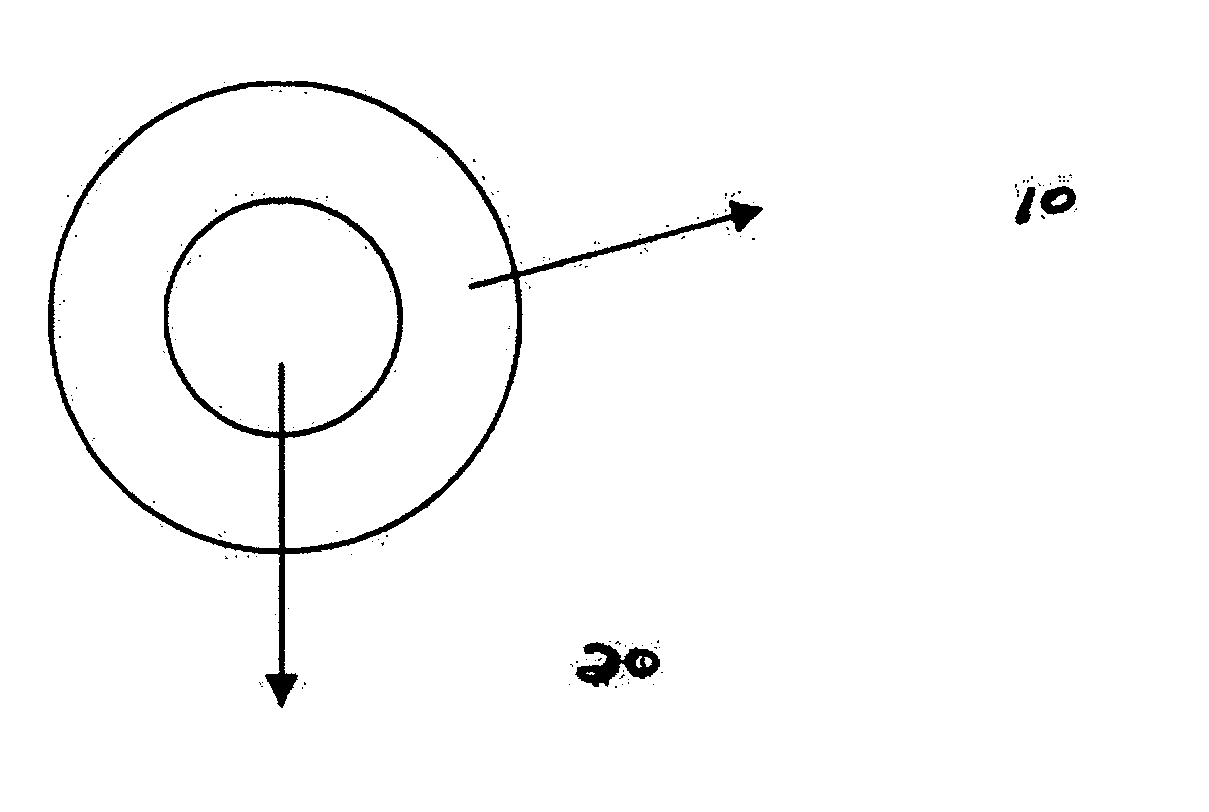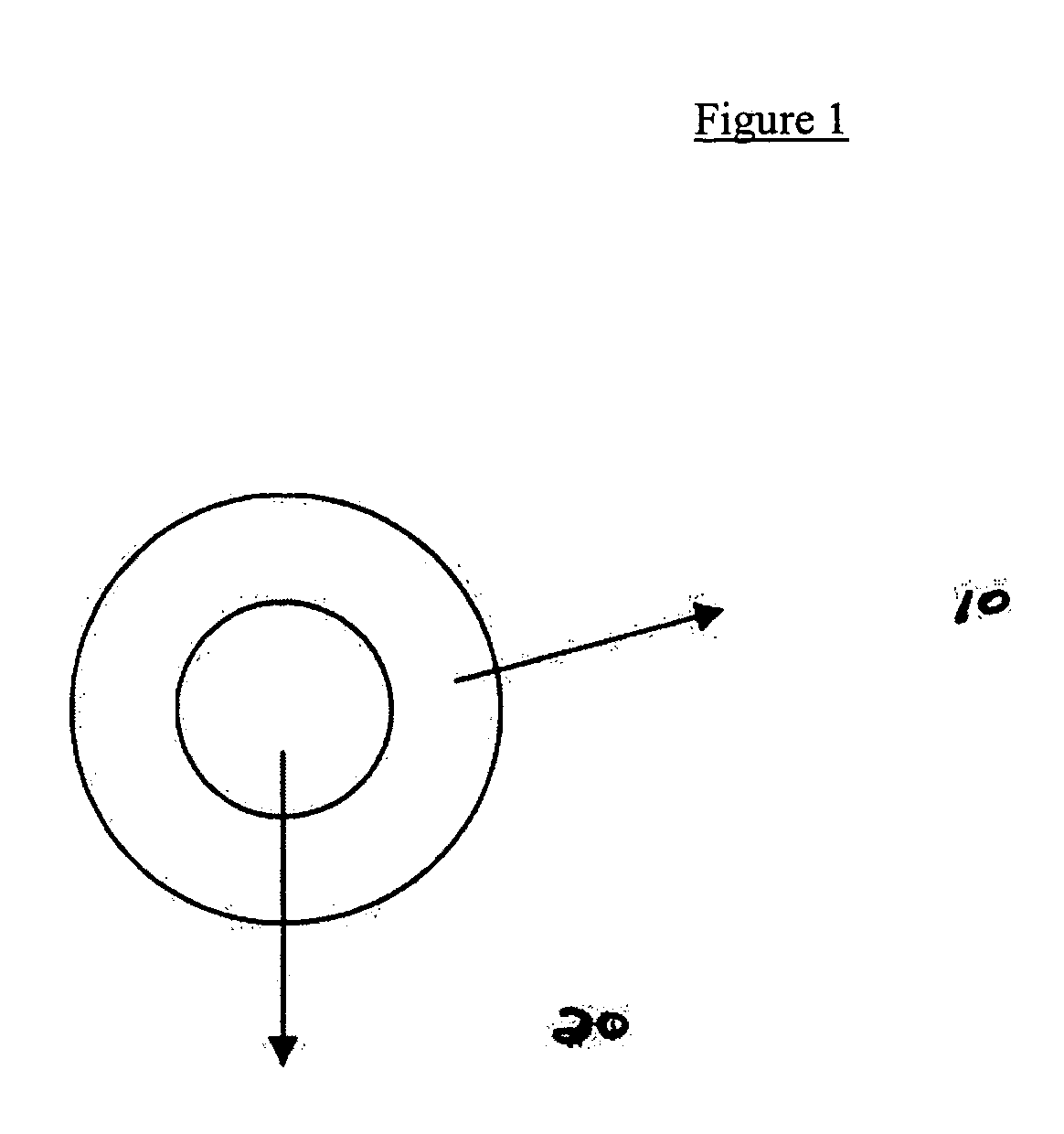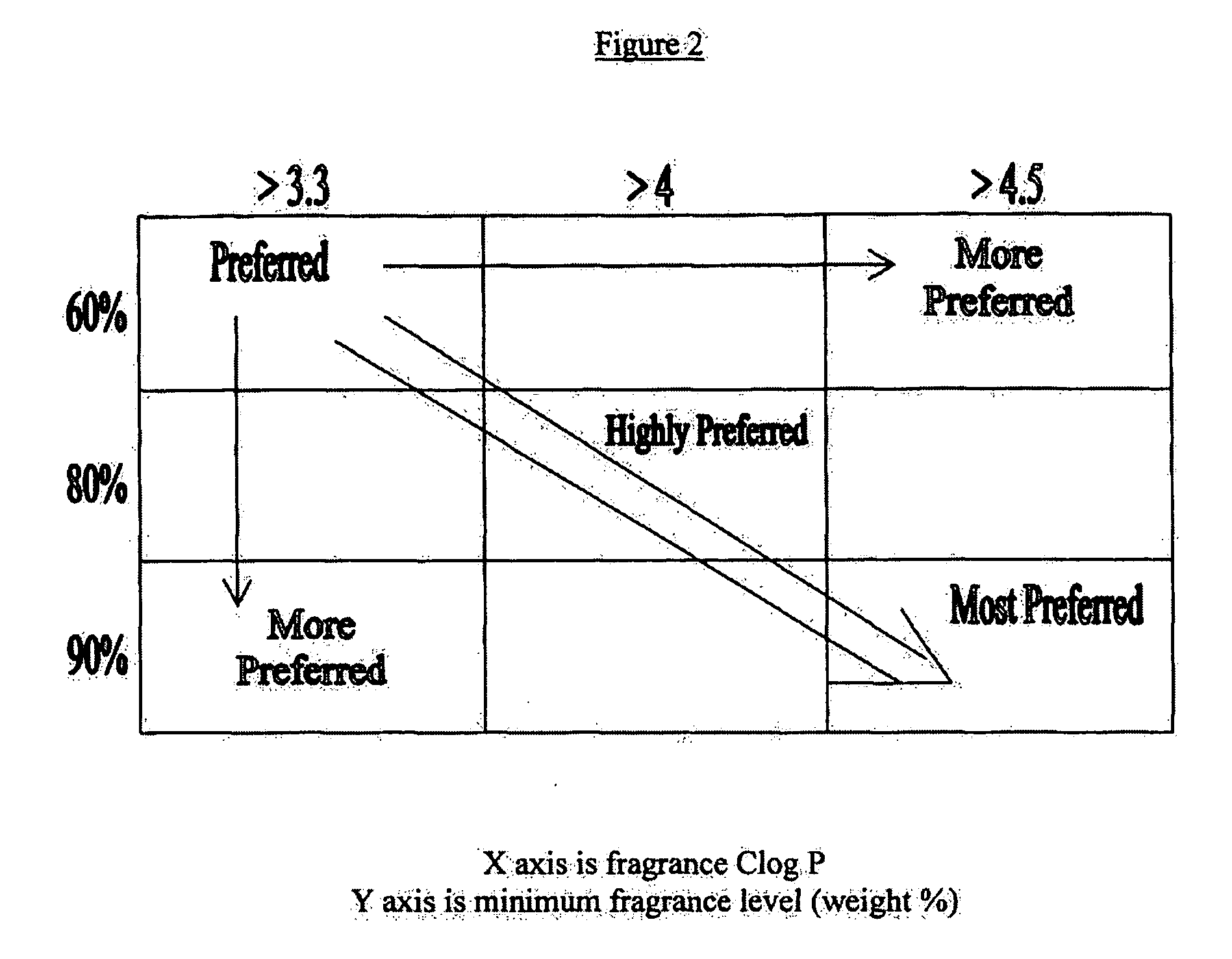Encapsulated materials
a technology of encapsulated materials and capsules, applied in the field of capsule making, can solve the problems of physical force affecting the structure of capsules, and it is not desired that the core is released from the shell prematurely, so as to reduce the effect of leaching of fragrance or flavor materials and slow the effect of leaching
- Summary
- Abstract
- Description
- Claims
- Application Information
AI Technical Summary
Benefits of technology
Problems solved by technology
Method used
Image
Examples
example 1
[0182] Cationic polymer-coated capsules were prepared by mixing uncoated fragrance-containing capsules with the cationic polymeric deposition aid at the desired level. This mixing can be done during the manufacturing process of the capsules or by post-addition of the cationic deposition aid as a solution. The uncoated capsules were prepared by interfacial polymerization of fragrance droplets. To make the capsule slurry, a copolymer of acrylamide and acrylic acid was first dispersed in water together with a methylated melamine-formaldehyde resin. These two components were allowed to react under acidic conditions. Fragrance was then added into the solution and droplets of the desired size were achieved by high shear homogenization. Curing of the polymeric layer around the fragrance droplets was achieved by increasing the temperature to 50-85° C.
example 2
[0183] A slurry of capsules having shell walls composed of an acrylamide-acrylic acid co-polymer cross-linked with melamine-formaldehyde resin as described in Example 1 was mixed with a concentrated fabric conditioner. The fabric conditioner was commercially obtained and did not contain fragrance. The capsule slurry contained approximately 25 weight % fragrance, and approximately 10% shell-wall material. The level of fragrance added to the product was 0.8%, and leaching was followed by headspace measurement via Solid Phase Microextraction (SPME).
[0184] As can be seen from FIG. 6, after storage at ambient temperature for six weeks, the release of fragrance materials is inversely related to Clog P.
[0185] The fragrance used in Examples 1 and 2 above was comprised of equal weight percents of the following fragrance materials:
[0186] Ethyl-2-methyl valerate (manzanate); limonene, DH myrcenol, phenyl ethyl alcohol, benzyl acetate, geraniol, dimethyl benzyl carbonate acetate, methyl nony...
example 3
[0187] A slurry of capsules having shell walls composed of an acrylamide-acrylic acid co-polymer cross-linked with melamine-formaldehyde resin was mixed with a commercially obtained concentrated fabric conditioner (DOWNY, Procter & Gamble). The capsules slurry contained fragrance levels as noted below, and approximately 10% shell-wall material. The level of fragrance added to the product was 0.8%, and leaching was followed by headspace measurement via Solid Phase Microextraction (SPME). The fragrance used consisted of either Lilial (logP=4.4, slurry level=14%) or Cyclacet (logP=3.3, slurry level=24%).
[0188] The DOWNY (Procter & Gamble, Cincinnati, Ohio) fragrance free fabric softener was purchased form a local grocery store and contained approximately 25% cationic surfactants as the active. As can be seen from the table below, after storage at ambient temperature, for up to five weeks at ambient temperature, the released level of Lilial was low and relatively constant, while that o...
PUM
| Property | Measurement | Unit |
|---|---|---|
| weight percent | aaaaa | aaaaa |
| weight percent | aaaaa | aaaaa |
| weight percent | aaaaa | aaaaa |
Abstract
Description
Claims
Application Information
 Login to View More
Login to View More - R&D
- Intellectual Property
- Life Sciences
- Materials
- Tech Scout
- Unparalleled Data Quality
- Higher Quality Content
- 60% Fewer Hallucinations
Browse by: Latest US Patents, China's latest patents, Technical Efficacy Thesaurus, Application Domain, Technology Topic, Popular Technical Reports.
© 2025 PatSnap. All rights reserved.Legal|Privacy policy|Modern Slavery Act Transparency Statement|Sitemap|About US| Contact US: help@patsnap.com



